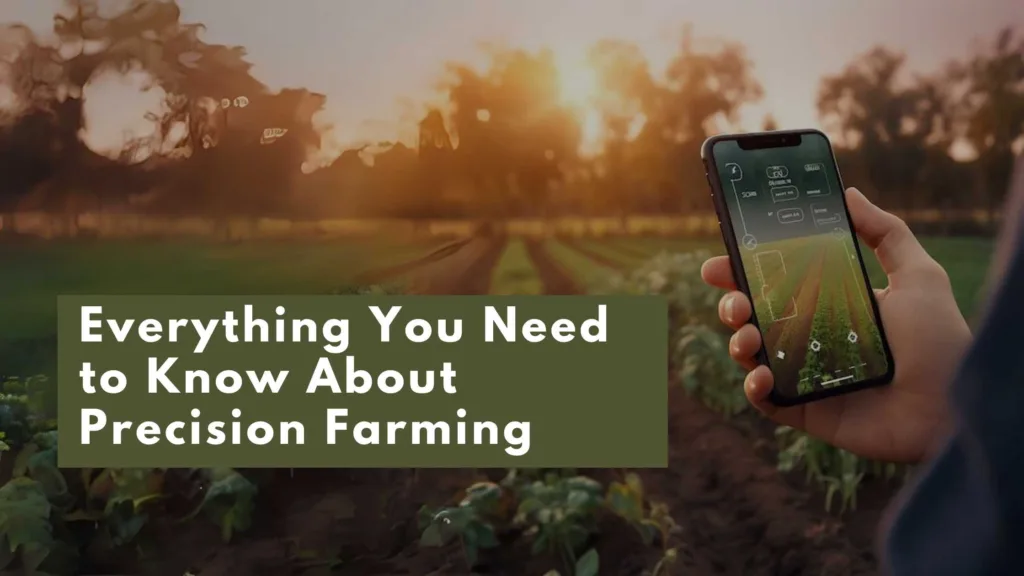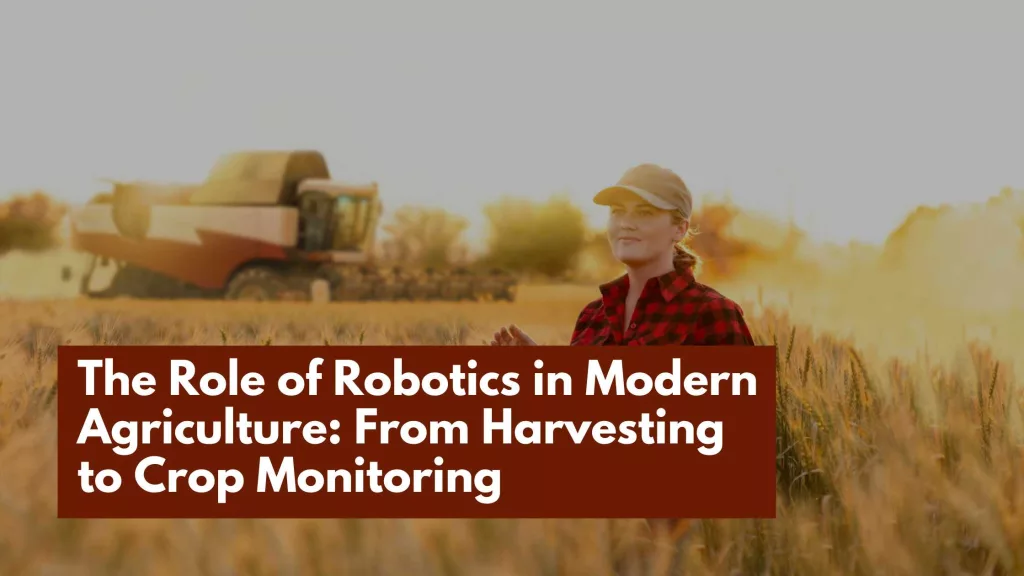Introduction – Sustainable Agriculture
Sustainable Agriculture and food systems provide a comprehensive strategy for tackling the worldwide problem of feeding the world’s expanding population. This strategy works while minimizing environmental consequences. This strategy combines ecological balance, social equality, and economic viability to secure long-term food security. Sustainable agriculture works to build resilient food systems, protect natural resources, and support farmers’ livelihoods. It ensures a future where food production and consumption are both sustainable and equitable.
What is Sustainable Agriculture
“Sustainable agriculture” is a food production system that satisfies current requirements without compromising the capacity of future generations to meet their own. Building a stable and balanced agricultural system entails integrating environmental, social, and economic factors.
Sustainable Agriculture’s primary goal is to maximize the utilization of natural resources while minimizing any adverse environmental effects. It encourages actions that preserve the health of the soil, the availability and quality of water, biodiversity, and air quality. These practices include agroecology, crop rotation, agroforestry, organic farming, and the use of natural fertilizers and pesticides.
Social equality and commercial viability are essential aspects of sustainable agriculture. Encouraging fair labor practices, access to resources, and enhanced livelihoods empowers farmers, particularly smallholders and marginalized populations. It promotes local and regional food systems to build a more diverse and resilient food supply chain. Also, it fosters relationships between farmers and consumers.
The ability of an agricultural system to adapt to climate change is another critical factor. Its main goals include lowering greenhouse gas emissions and adjusting agricultural practices to shifting climatic circumstances. This may entail putting climate-smart tactics into practice, such as precision farming, conservation agriculture, water management strategies, and adopting drought- or climate-resistant crop types.
Farmers may increase their enterprises’ long-term productivity and profitability while minimizing their environmental impact by implementing sustainable agricultural practices. By making wise decisions that promote local, organic, and sustainable food options, consumers can also help sustain agriculture.
In general, sustainable agriculture offers a comprehensive food production strategy that attempts to balance environmental protection, social equity, and economic success. It acknowledges the connections between our food system, the environment, and society and works to build a more resilient and sustainable future for farming and food production.
What is a Sustainable Food System?
A sustainable food system considers environmental, social, and economic factors at each level of the food production, distribution, and waste disposal processes. It strives to ensure that food is grown, processed, distributed, and eaten in a way that promotes the health of people, the environment, and future generations.
A sustainable food system takes into account the following fundamental ideas:
Ecological Stewardship:
It emphasizes reducing the damaging effects that food production has on the environment. This entails encouraging organic agricultural methods, cutting greenhouse gas emissions, saving energy and water, preserving biodiversity, and using fewer chemicals in production.
Social Equity:
A sustainable food system aspires to promote fairness and social justice throughout the food value chain. It focuses on ensuring everyone has access to wholesome food, paying farmers and workers fairly, fostering local communities, and tackling the challenges of food insecurity and poverty challenges.
Economic viability:
It acknowledges that a strong economy is crucial for farmers, food producers, and other stakeholders. For small-scale farmers and regional enterprises, a sustainable food system promotes viable livelihoods, pricing, and market possibilities. It encourages openness and moral conduct in business while discouraging unfair commercial methods in the food sector.
Healthy and nutritious food is produced and consumed with the highest priority in a sustainable food system. It promotes a variety of eating styles, less food waste, and sustainable food options. It encourages food safety and ensures that food production and processing practices put nutrition and health first.
Resilience and Adaptability:
A sustainable food system fosters resilience in climate change and other difficulties. This entails modifying agricultural methods to account for shifting climatic circumstances, diversifying crops, fostering seed variety, funding research and development, and enhancing local and regional food systems.
Collaboration and Partnership:
Farmers, governments, corporations, civil society organizations, researchers, and consumers must work together and in partnership to create a sustainable food system. HandlingHandling the complex issues facing the food system encourages communication, information exchange, and collaboration.
An ecologically friendly, robust, and resilient food system that assures food security, safeguards natural resources, supports livelihoods, and fosters the health and well-being of individuals and communities is what a sustainable food system aims to build.
How Agriculture plays a vital role in feeding the world
By creating the food and resources required for sustenance, agriculture is essential to feeding the world’s population. Here are some significant ways that agriculture helps provide the globe:
Production of Food:
Food is produced mainly through agriculture on a worldwide scale. Aquaculture, agricultural cultivation, and animal raising are all included, and they all provide essential food items, including grains, vegetables, fruits, meat, dairy, fish, and more. Agriculture maintains a steady supply of food to fulfill the dietary demands of billions of people by cultivating and producing crops and animals.
Food Security:
Agriculture is essential to establishing food security, ensuring everyone can access enough secure and nourishing food. Agriculture reduces hunger and malnutrition by raising agricultural production and diversifying food sources. Effective distribution networks, sustainable farming practices, and technology broadly address global food security issues.
Employment and livelihoods:
Especially in developing nations, agriculture is an essential source of employment and livelihood. It offers revenue prospects for farmers, farmworkers, and anyone working in the agricultural value chain, including processors, distributors, and marketers. Agriculture helps with economic growth and the alleviation of poverty by generating jobs and bolstering rural economies.
Economic growth and trade:
Agriculture makes a significant contribution to both national economies and international trade. Agriculture exports and imports account for a sizable portion of world commerce, opening economic possibilities for nations and offering access to various food goods. Countries may improve their food security, earn money, and promote economic progress by engaging in agricultural commerce.
Rural Development:
Agriculture is essential to the development of rural communities, as farming is sometimes the primary source of income. Rural populations’ livelihoods and living circumstances can be improved via investments in agriculture, infrastructure, and associated services. Agriculture may help reduce poverty and improve the general well-being of rural inhabitants by encouraging sustainable farming practices, increasing market access, and offering training and resources.
Environmental Stewardship:
Using sustainable agriculture methods can help reduce the adverse effects that food production has on the environment. Agriculture may minimize soil erosion, safeguard water resources, maintain biodiversity, and lower greenhouse gas emissions by using techniques like agroforestry, conservation agriculture, and organic farming. Agriculture must practice environmental stewardship to produce food for the long term and protect natural resources.
Conclusion
In conclusion, agriculture is crucial for providing food for the world’s population. It secures food production, supports livelihoods, improves food security, promotes economic growth, and aids in developing rural areas. It is possible to handle the problems of population expansion, climate change, and environmental sustainability through sustainable agriculture practices, enabling a solid and well-fed global population.
Additionally, agriculture is essential to feeding the globe because it produces food, ensures food security, creates jobs and livelihoods, stimulates trade and economic growth, supports rural development, and encourages environmental care. We can handle the issues of food production, population expansion, climate change, and resource conservation through sustainable agriculture practices. It creates a solid and well-nourished global population.



Learning about how agriculture plays a vital role in feeding the world reminds me of the incredible impact farmers have on our lives.
Reading about sustainable food systems makes me hopeful for a future where everyone has access to nutritious food.
Sustainable agriculture is like giving back to the Earth while feeding the world – it’s a win-win for everyone!
Agriculture is the backbone of our global food system – let’s support policies and practices that promote sustainability and fairness.
What is a sustainable food system? It’s about more than just growing food – it’s about equity, health, and resilience.
Sustainable agriculture isn’t just a buzzword – it’s a commitment to nourishing the planet and its people.
Agriculture plays a vital role in feeding the world – let’s celebrate the farmers who work tirelessly to put food on our tables.
A sustainable food system is like a well-oiled machine – ensuring that everyone has access to nutritious food, now and in the future.
What is sustainable agriculture? It’s like farming with a conscience – nurturing the land while feeding the world.
Sustainable agriculture and food systems are like a recipe for a brighter future – let’s dig in!
Sustainable agriculture isn’t just about food production – it’s about ensuring a better future for all.
It’s fascinating to see how agriculture is interconnected with global food security.
A sustainable food system ensures that everyone has access to nutritious food – so important!
Learning about sustainable agriculture systems gives me hope for the future.
It’s inspiring to see how agriculture plays such a vital role in feeding the world.
Sustainable food systems seem like the way forward for feeding our growing population.
Understanding what sustainable agriculture is makes me appreciate farmers even more.
This post really emphasizes the importance of sustainable agriculture – great read!